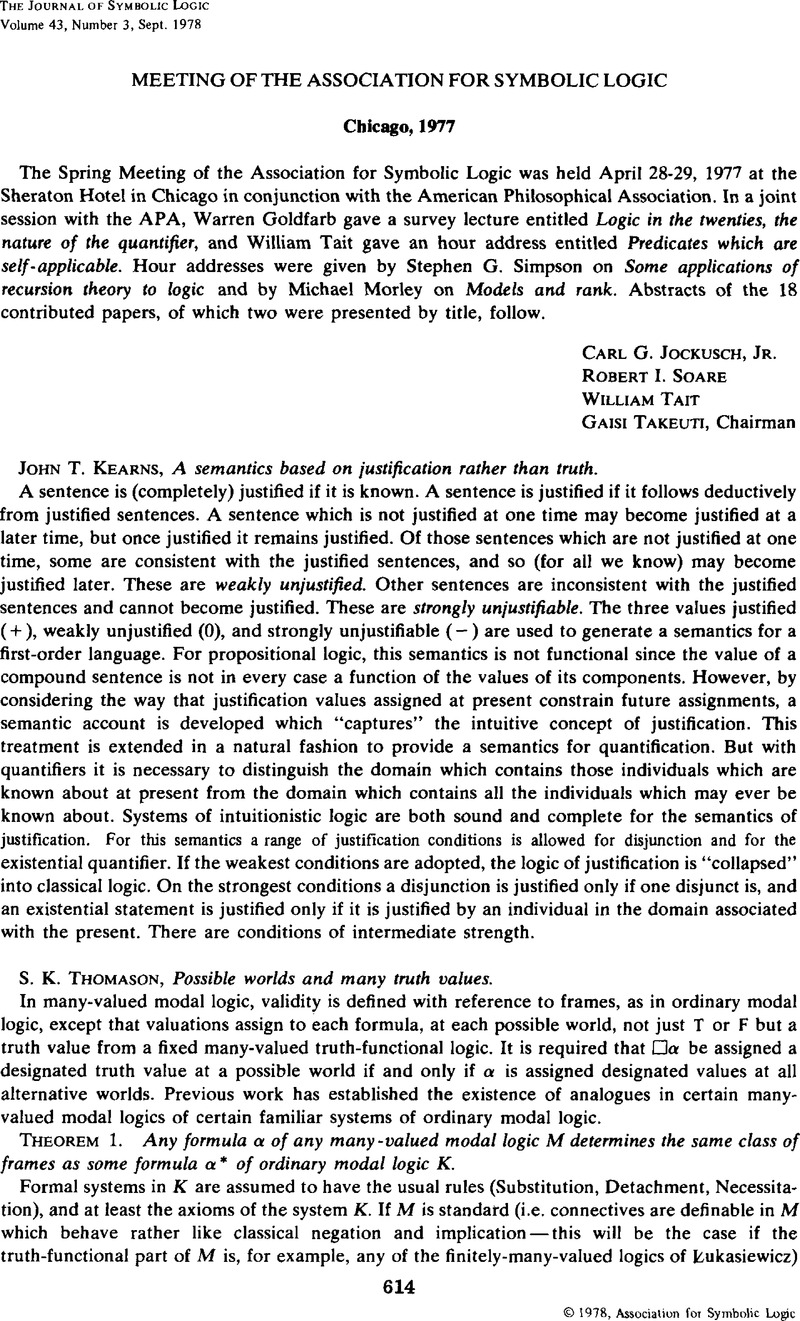No CrossRef data available.
Article contents
Meeting of the Association for Symbolic Logic, Chicago, 1977
Published online by Cambridge University Press: 12 March 2014
Abstract
An abstract is not available for this content so a preview has been provided. Please use the Get access link above for information on how to access this content.

Information
- Type
- Meeting Report
- Information
- Copyright
- Copyright © Association for Symbolic Logic 1978
References
REFERENCES
[1]Wheeler, W. H., The first order theory of n-colorable graphs, Transactions of the American Mathematical Society (to appear).Google Scholar
[1]Blum, M., A machine-independent theory of the complexity of recursive functions, Journal of the Association for Computing Machinery, vol. 14 (1967), pp. 322–336.CrossRefGoogle Scholar
[2]Sacks, G. E., Post's problem, admissible ordinals and regularity, Transactions of the American Mathematical Society, vol. 124 (1966), pp. 1–24.Google Scholar
[3]Shore, R. A., On the jump of an α-recursively enumerable set, Transactions of the American Mathematical Society, vol. 217 (1976), pp. 351–363.Google Scholar
[4]Soare, R., Computational complexity, speedable and levelable sets, this Journal, vol. 42 (1977), pp. 545–563.Google Scholar
[1]Grandy, Richard E., Advanced logic for applications, Reidel, Dordrecht, 1977.CrossRefGoogle Scholar
[2]Grandy, Richard E., Anadic logic and English, Synthese, vol. 32 (1976), pp. 395–402.CrossRefGoogle Scholar
[3]Monk, J. Donald, On an algebra of sets of finite sequences, this Journal, vol. 35 (1970), pp. 19–29.Google Scholar
[1]Feferman, S., Formal theories for transfinite iterations of generalized inductive definitions and some subsystems of analysis, Intuitionism and proof theory (Myhill, , Kino, and Vesley, , Editors), North-Holland, Amsterdam, 1970, pp. 303–325.Google Scholar
[2]Friedman, H., Iterated inductive definitions and Σ21– AC, op. cit., pp. 435–442.CrossRefGoogle Scholar
[3]Tait, W. W., Applications of the cut elimination theorem to some subsystems of classical analysis, op. cit., pp. 475–488.CrossRefGoogle Scholar

